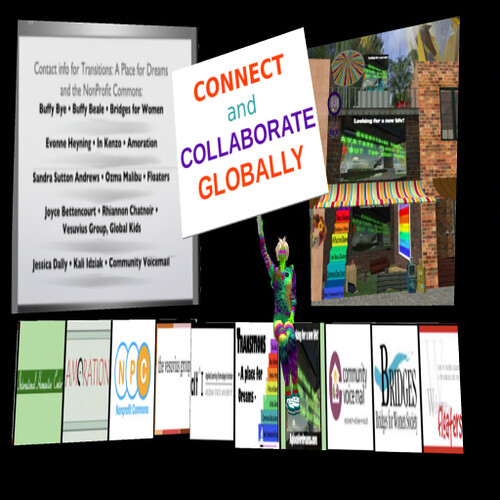
TSDIGS 4 Collaborate, a photo by dreamponderCreate on Flickr.
"Digital Storytelling is the practice of using computer-based tools to tell stories." (University of Huston; the Educational Uses of Digital Storytelling). I've been using digital storytelling software for a while now. As you can tell from previous posts I have small children and this type of digital storytelling has been a great way for them to have some fun with their aunt who lives in California. To keep communication alive in our family we make books using storybird; we can either do this collaboratively by making stories together (you can make them open to groups) or we share things we did in story format (going to the zoo or on a vacation). My daughter thinks its great because we read so many books at home and with this she gets to read books that she helped make (you can even buy them and have them shipped to you in hardcover format so they can actually flip through the pages!)
We use it at home to stay connected, but why not use it in schools to stay educated! Digital storytelling can be a great way to keep students engaged in learning. "Digital stories let students express themselves not only with their own words but also in their own voices, fostering a sense of individuality and of “owning” their creations. At the same time, digital stories give students an opportunity to experiment with self-representation—telling a story that highlights specific characteristics or events—a key part of establishing their identity, a process that for many is an important aspect of the college years." (7 Things you should know about Digital Storytelling). What a great way to get kids involved right! So next time you have to teach a lesson on the Civil War (or any social studies lesson really) why not make a digital story about it. Or better yet, teach the kids the lesson and let them make some stories of their own that way your testing their comprehension and their having fun doing it.
Another great idea; if your teaching ESL students and you have a large diverse class you could have everyone make a book about where they are originally from. It doesn't have to be anything to complex since most of them may not be able to write to many words, but even if they are putting 2 or 3 words on each page they can feel like they are doing something fun while learning spelling and word recognition and then they have something to present to the class to work on oral skills as well. They can do it collaboratively (if some of them are from the same areas) or individually. It could also be a good idea for the teacher to put a book together in the beginning of the year on everyone being equal even though they are from different places (great way to teach cultural acceptance and awareness). You could even collaborate with different classes in different states or countries! Talk about global learning and cultural awareness!
Downside? "Many people find that piecing together a coherent narrative is considerably more difficult than they thought, and students not comfortable producing original work are likely to find themselves simply modeling their efforts on digital stories they have come across." 7 Things you should know about Digital Storytelling). I know we had a hard time when we first started this in our family; you find all these pictures that you like and then think 'okay, now what?' or you have this great story in your head but when you try and write it you think 'this makes no sense!' Well rest assured it does get easier as you get more comfortable with the concept. And most of the time it works to start with writing the story down first on some paper, then figure out the best places in that story to split into pages, then find the pictures to go with it. Even if you have some great pictures you love they just might not fit well in the story your trying to get across, save them for another time maybe you can fit them in a new story later! Its also a good idea to model a story first for your students (especially ESL students) and let them modify that for a while before you have them create on their own, although you may be surprised to find out that you have a harder time thinking up stories than most student do! Either way, storytelling with a digital twist is definitely a great way to teach and learn!
Thanks for the useful suggestions on creating stories!
ReplyDelete